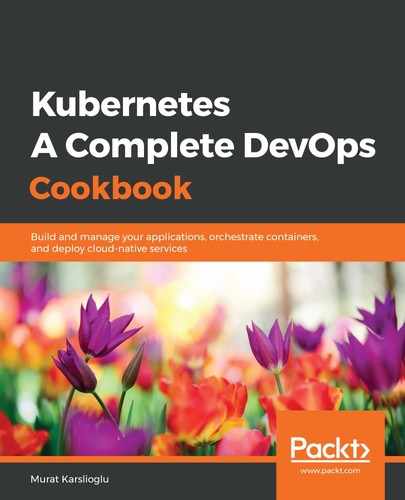This recipe showed you how to quickly troubleshoot common Kubernetes cluster issues.
In step 1, when the kubectl cluster-info command was executed with the --output-directory parameter, Kubernetes dumped the content of the cluster state under a specified folder. You can see the full list using the following command:
$ tree ./cluster-state
./cluster-state
├── default
│ ├── daemonsets.json
│ ├── deployments.json
│ ├── events.json
│ ├── pods.json
│....
In step 4, we marked the node as unavailable using the kubectl cordon command. Kubernetes has a concept of scheduling applications, meaning that it assigns pods to nodes that are available. If you know in advance that an instance on your cluster will be terminated or updated, you don't want new pods to be scheduled on that specific node. Cordoning means patching the node with node.Spec.Unschedulable=true. When a node is set as unavailable, no new pods will be scheduled on that node.
In step 5, we use, the kubectl drain command to evict the existing pods, because cordoning alone will not have an impact on the currently scheduled pods. Evict APIs take disruption budgets into account. If set by the owner, disruption budgets limit the number of pods of a replicated application that are down simultaneously from voluntary disruptions. If this isn't supported or set, Evict APIs will simply delete the pods on the node after the grace period.
